How to paint plywood?
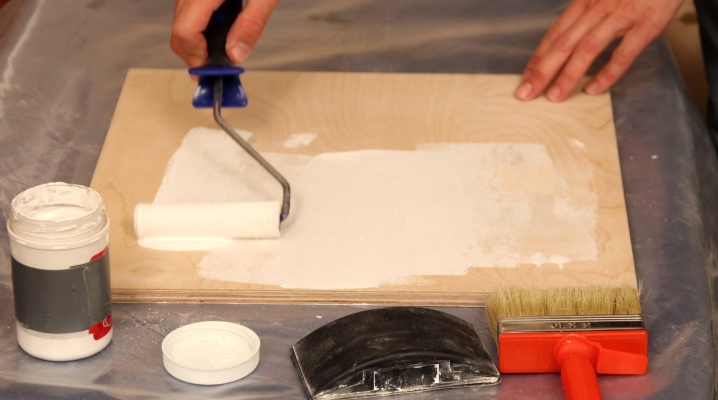
Often there is a need to quickly and cheaply decorate a room. In this case, you can use plain plywood, and to make it look attractive, it should be painted in your favorite shade.
Compliance with the painting technology will save on repairs in the future.

How to paint?
It is best to use waterproof paint to paint plywood, especially if you plan to sheathe a room with it outside. Moisture-resistant material is also suitable for home, especially since it is odorless.
Most modern manufacturers try to present as many colors as possible so as not to limit people in their imaginations. If necessary, no one canceled the colors. They are very easy to adjust the color intensity.
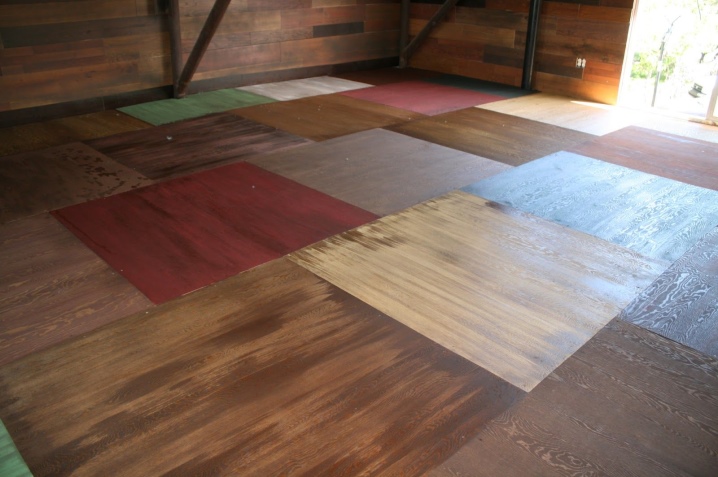
Semi-gloss and glossy finishes are easier to clean and look chic. It is often used to decorate shelves and paint doors.
Water-based acrylic latex compounds are easiest to work with. However, if you want to have a semi-gloss finish, you need to use acrylic enamel, and if glossy, then oil enamel paint. Both in the first case and in the second, a preliminary application of a primer is required.
Enamel paints are best used in rooms where you often need to clean up: enamel has good resistance to wear. Therefore, kitchen and bathroom cabinets are painted with them.


The use of a semi-gloss enamel finish is applicable to furniture and shelves in children's rooms.
For areas where extra resistance is required, epoxy based paints are best, although they are expensive. It is essentially a low viscosity, two component epoxy tinted for use as a paint. After mixing, the user has a short time to apply the composition.
Although difficult to work with, the end result is a much stronger finish than what you would get with any other type of paint.


You should always use only high quality paint to achieve the best result. High quality paints have a high percentage of solids in the composition. Therefore, the applied layer turns out to be thick and, accordingly, durable.
When it comes to latex paint, sometimes it is better to apply two coats.
Spray painting of plywood is impractical in most cases because it results in a very thin layer. As a result, it wears out quickly, plywood loses its attractiveness.
If you use this method of painting, then it is desirable on a small surface area and in several layers.
In this case, you should first use a primer to seal the wood. This is the only way to get the maximum result from applying paint from a spray gun.

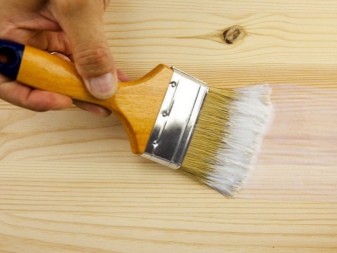
When using spray cans, the edges will need to be painted over especially carefully, otherwise the coating will peel off over time.
There is also a plywood emulsion, a plastic paint primarily intended for use on drywall. Some craftsmen try to apply it to plywood as well. It turns out well, but without a primer, the desired result will not work.

How to prepare the surface?
The first step in surface preparation is to fill holes, cracks, joints with a special compound. The user is required to make the surface as smooth as possible. Typically, holes and other irregularities are filled with wood putty, but this is not the only material that can be used. However, none of the fillers is as strong as the first one mentioned.
Be sure to wipe the plywood with a damp cloth before starting work. This will remove dust and dirt that impair the adhesion between paint and wood.
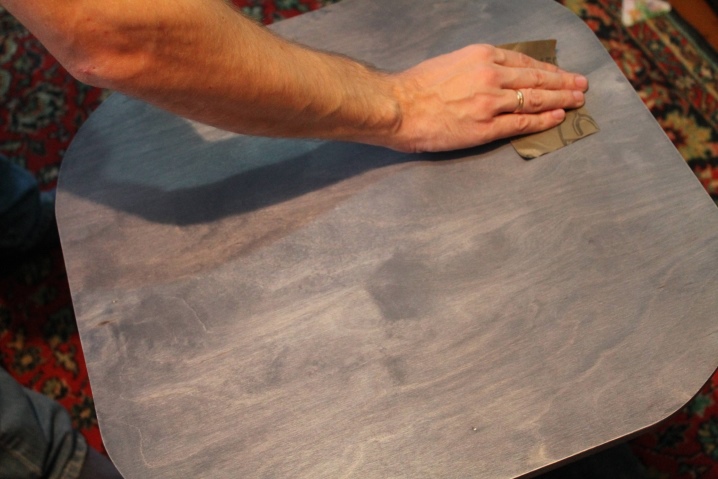
At the second stage, the entire surface is degreased, putty is applied with a thin layer on drywall using a wide spatula. Allow the composition to dry completely and then smooth the surface. Fine-grained sandpaper is ideal for this.
If there are deep cracks, then after sanding, they are re-filled, and so on until the plywood is completely flat and ready for the next step.
Putty is worth mentioning separately. Suitable:
- plaster;
- cement;
- polymer;
- homemade.



The simplest and most affordable is considered to be a gypsum composition. It practically does not shrink, has the necessary plasticity.
Cement putty has attractive moisture resistance, but its big drawback is high shrinkage and a complete lack of elasticity.
The polymer product is more expensive, it is not surprising, since it does not shrink, does not crack. When using such a putty, there is no need to reapply the compound to cracks.
Homemade composition is made from PVC glue and fine sawdust.


Keep in mind that any filler, after complete drying, shrinks, that is, it sags, as it were. So don't be surprised if you have to apply more than one coat.
If you intend to use plywood outdoors, you can fill the edges with paint.
Finish sanding the plywood with fine sandpaper. If a lot of filler has been used, it is best to start with a coarser sandpaper.
After that, the surface will need to be wiped again with a damp cloth. The primer can now be applied. This compound is used to seal the surface of wood. Unlike paint, it does not absorb into it, but dries faster.

The use of a primer reduces paint consumption as it seals the pores.
At the same time, the composition promotes the binding of the paint to the wood surface. Some of the modern acrylic latex paints are paint and primer combinations. If you use such a material, then there is no need to pre-prime.
Since the primer seals the pores, preventing the paint from absorbing, the paint will accumulate on the surface, the shade will be saturated.

Enamel products do not dry well when applied directly to wood. In this case, the primer acts as a barrier and allows the paint to dry properly.
Applying any primer coat is just as important as applying the finishing coat. The primer should be applied smoothly and evenly so that there are no drops, no puddles, no streaks. All these irregularities will be visible through the finishing coat of the colored coating. Always move the brush in one direction using long smooth strokes.
After the soil has dried, the surface will need to be checked for defects.

Painting technology
Inside or outside the house, you can easily paint plywood with your own efforts. The first step to getting a good finish is sanding and priming. Any defect will appear after the tree is covered with color.
Some people prefer to leave the "woodgrain" effect by simply opening the plywood with varnish. But you can often find even a drawing on such material.
If the sheet begins to be painted after laser cutting, then it must be wiped with a damp cloth, it is advisable to process the edges with coarse sandpaper.


Film faced plywood is the most difficult to cover, usually used for furniture production.The thing is that the top layer practically does not absorb paint, therefore, it easily leaves it.
Even old shelves or plywood doors can be made beautiful with your own hands if you try a little. The gloss finish looks very interesting.
The easiest option is to simply cover it with stain. By the way, it will even lie on the laminated surface.
It is equally important to use quality brushes.
A nylon brush is ideal for latex paints. The bristles should be uniform and well trimmed. This greatly affects the finish as different lengths can lead to more streaking.
It's best to paint over the edges of the plywood first and then paint over the rest. This will make drops and smudges less noticeable.
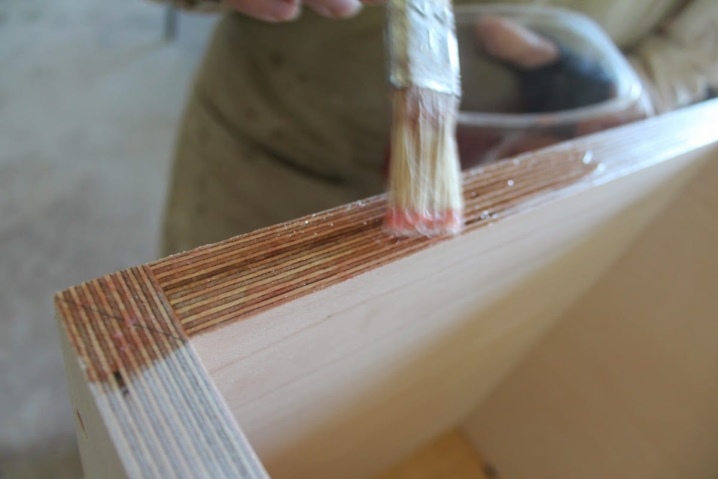
Use a wet brush, not a dry one. The idea is not to see how far the paint can stretch, but rather to see how much of it can lie before gaps appear.
Always paint only in the direction of the grain of the wood. Better to count on two layers at once, each should dry well.
When painting plywood that is planned to be installed outdoors, there must be at least three layers. This is the only way to avoid the rapid peeling of the powder paint.
The surface is painted over with smooth, crisscross strokes. The best way to ensure full coverage, no matter what tool is used, is to do long strokes. Some people prefer to move the brush in a "w" shape. This will align the edges of each stroke, where more paint tends to collect.

Not all newbies manage to do the job right away. If you follow the recommendations of experts, then the painted plywood sheet will last a long time.
If the surface is large, a roller should be used. It is good when it is made of foam rubber. Felt can leave lint, which will greatly spoil the impression of staining. In this case, too, they move longitudinally, in the direction of the wood fibers.

How to varnish?
If it is decided to use varnish, then, in principle, the technology does not change. Before applying the composition, you will also need to pre-treat the plywood. The treatment is carried out first with a damp cloth, then with a primer, and only then can the varnish be applied.
In order for the product to acquire an attractive shine, it must be sanded with sandpaper. Fine-grained material is ideal for this job.


After that, the dust must be removed with a rag, otherwise the varnish will lie unevenly and peel off quickly.
The varnish is also allowed to be applied to a previously painted surface. This will give the product a unique shine. But it is important to make sure the paint is completely dry before varnishing.
How to paint plywood correctly, see below.













The comment was sent successfully.